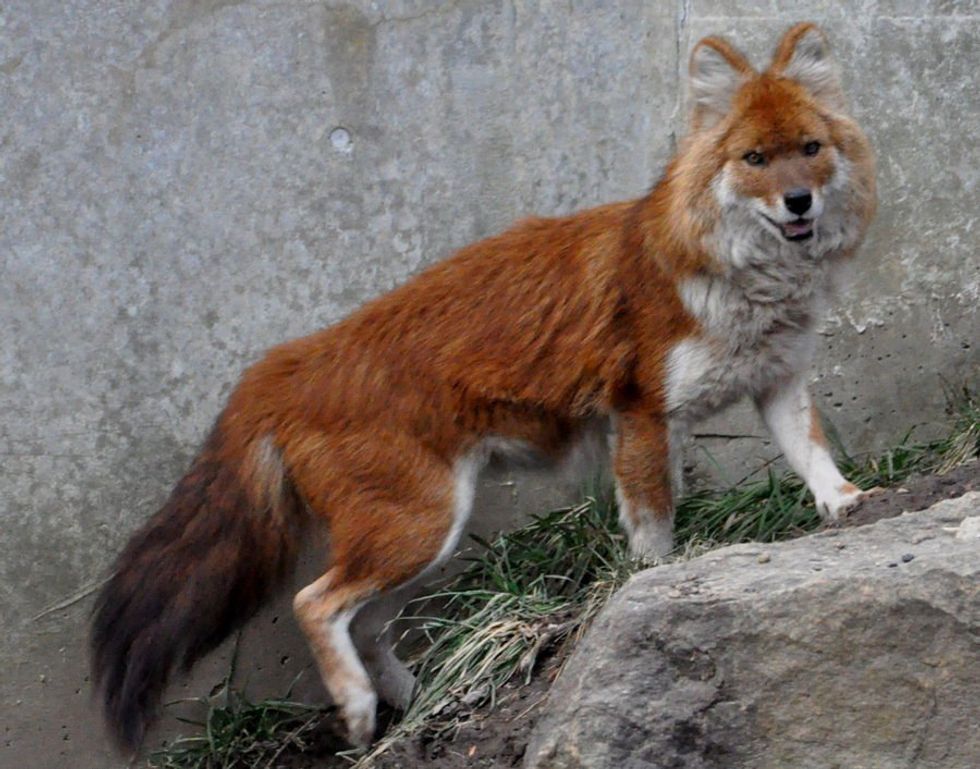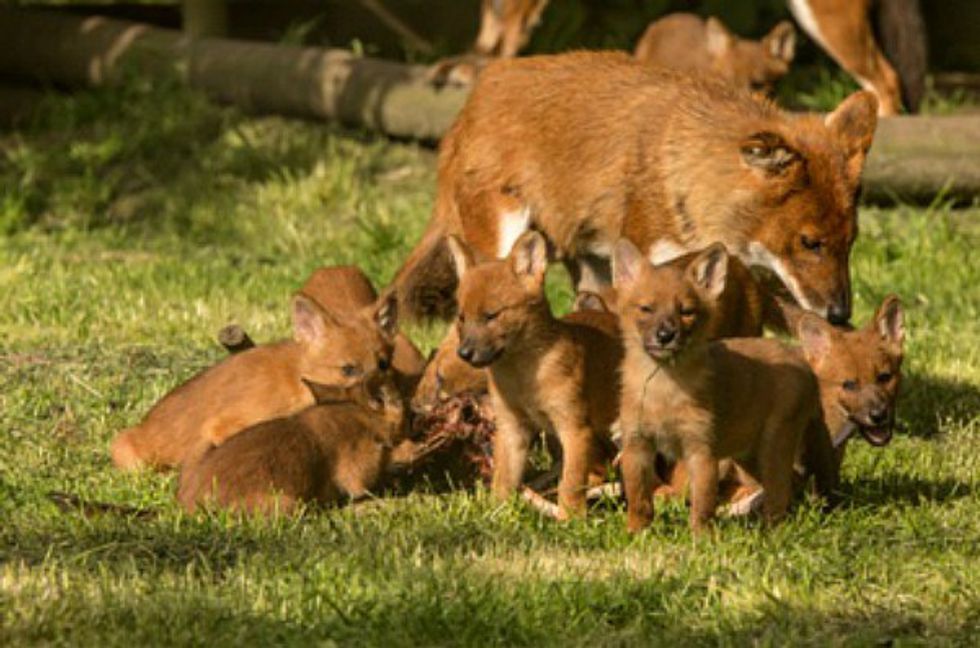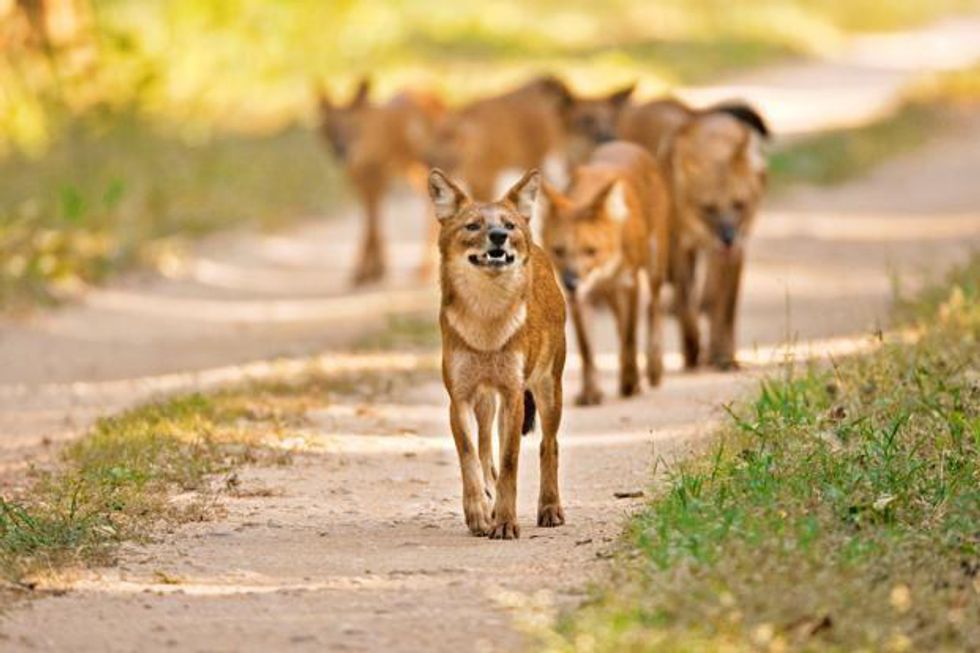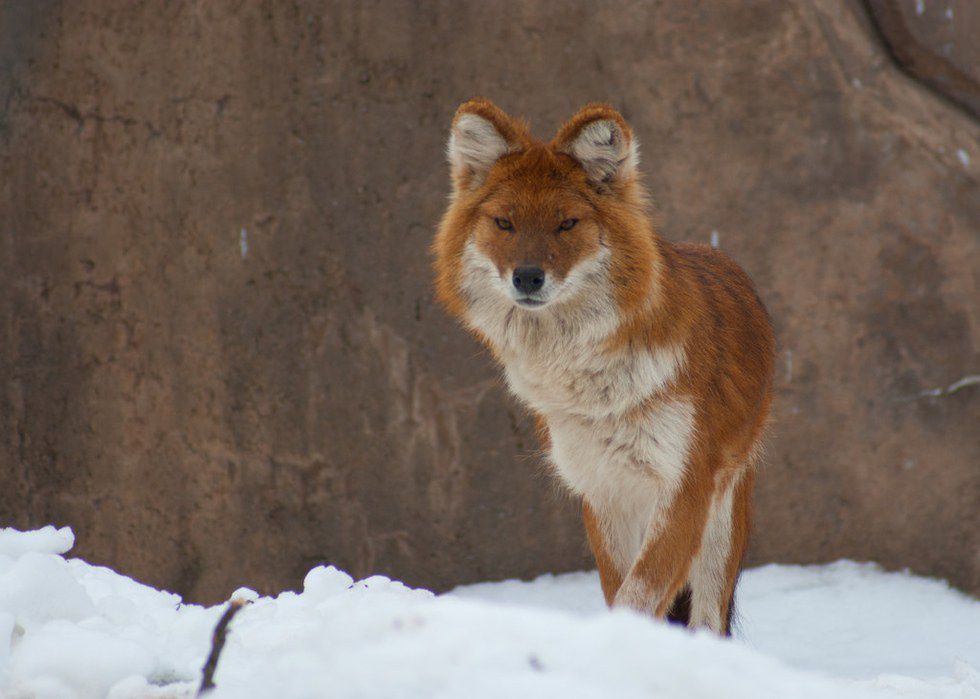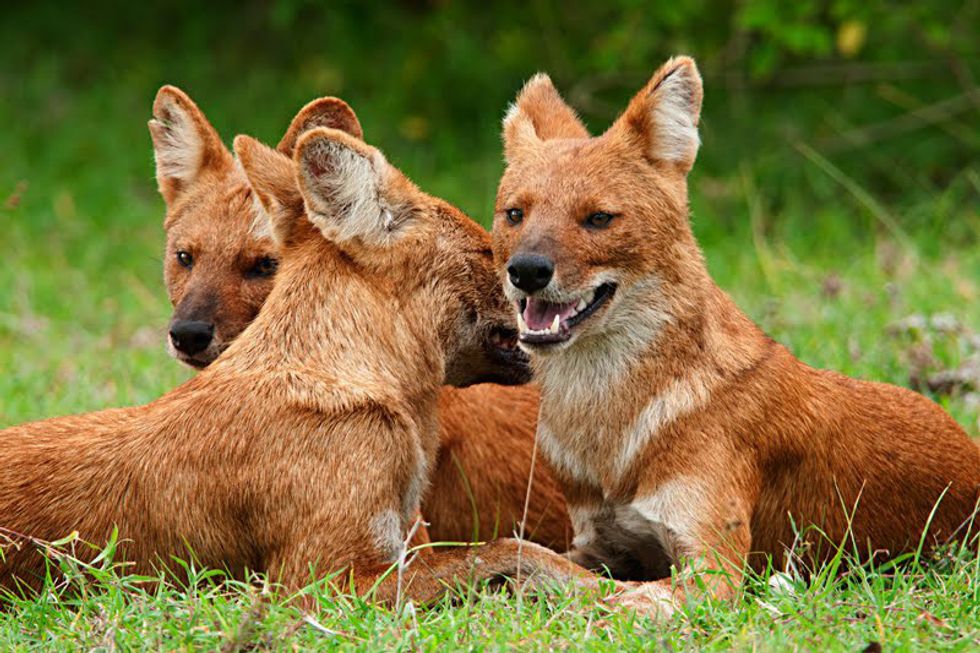This is a new series of articles I will produce every other week or every few weeks, highlighting specific species of animals. I will mainly focus on animal species that are not as well known or endangered species, the ones that need the most attention. To kick off this new series, I will begin with one of my favorite canids, the dhole!
The dhole [dohl], Cuon alpinus, also known as the Asiatic wild dog, is a canid native to Asia, in the central, south, and southeast regions to be exact. Its appearance looks like that of a cross between a wolf and a fox, with reddish brown fur gracing its body and white fur on its belly, legs, and inner ears. The tail can either have a black tip or be completely black. They are typically the size of a medium to large dog such as the German Shepherd. While dholes are known as dogs, or wild dogs, and are in the family Canidae, they are not exactly classified as canines. According to the San Diego Zoo, that unlike wolves and foxes, dholes have a different number of teeth. They only contain two molars on each side of their lower jaw, instead of three, and have a shorter jaw/muzzle compared to other dogs and wolves. Also, female dholes possess more teats, as they can have a litter of pups of up to 12 individuals. That’s a lot of parenting!
Photo (c) Dave Rolfe
One thing the dhole has in common with wolves and other wild dogs is that they are pack animals. They can form packs up to 12 members, but even larger packs of around 30 individuals have been recorded. Like other wild dogs, dholes have a dominant breeding pair, and the subordinates work to feed and help raise the breeding pair’s pups. Inter-pack fights (such as fighting over territory) are very seldom. It is thought that it might be because the neighboring packs are related to one another, and so they are not as quick to become aggressive. This relatedness happens because sometimes dholes do not stay within one pack their whole life. For example, when a mother dhole is finished rearing her pups to adulthood, she will head out and live with other packs.
Photo (c) Ramki Sreenivasan/Conservation India
The dhole’s diet consists of meat and berries, which makes them omnivorous. Their habitat ranges from dense forests to alpine regions, and depending on what area they live in, they hunt a vast variation of prey, particularly ungulates (hooved mammals). They hunt in groups, with one dhole in the lead. Being high energy animals, they can run at high speeds, swim, and jump to impressive heights, making them very athletic. The wild dogs communicate back and forth to each other with a unique set of sounds. One name the dhole has been given is the whistling dog, because they use a high-pitched whistle that is unknown to any other member of the canid family. They use a variety of sounds, such as clucks and high-pitched screams. Unlike other canid pack dwelling species, the dhole does not howl.Photo (c) William Pitcher
The dhole is currently classified as endangered, due to habitat loss. Fewer than 2,500 of these wild dogs remain in the wild. Their territories are growing smaller, which also means their prey numbers are dwindling. They are highly susceptible to diseases that humans bring in with their dogs, such as distemper and rabies. Humans will also set traps for dholes and poison them, as they are seen as an unwanted pest. However, their biggest threat is habitat loss. The dhole is in a dire situation, but you can help protect and ensure its future by helping through donations to causes such as the World Wildlife Fund (WWF) and the San Diego Zoo Global!




